
 Copyright Copyright 2019 by Dover Publications, Inc. All rights reserved. Bibliographical Note This Dover edition, first published in 2019, is a new compilation of images originally published by Peter F. Collier & Son Publishers in 1908 and 1914. Jeff A. Menges has selected the 100 illustrations and written the biographical information and the Foreword for this edition.
Copyright Copyright 2019 by Dover Publications, Inc. All rights reserved. Bibliographical Note This Dover edition, first published in 2019, is a new compilation of images originally published by Peter F. Collier & Son Publishers in 1908 and 1914. Jeff A. Menges has selected the 100 illustrations and written the biographical information and the Foreword for this edition.
The headpiece for the Table of Contents on page is from Thirty Favorite Paintings by Leading American Artists, published by P. F. Collier & Son, 1908. Library of Congress Cataloging-in-Publication Data Names: Collier, Peter Fenelon, 18491909 editor. | Menges, Jeff A., editor. Menges. Menges.
Other titles: One hundred favorite illustrations from Colliers magazine, 1898-1914 Description: Mineola, New York : Dover Publications, 2019. | This Dover edition, first published in 2019, is a new compilation of images originally published by Peter F. Collier & Son Publishers in 1908 and 1914. Jeff A. Menges has selected the 100 illustrations and written the biographical information and the Foreword for this edition. | Magazine illustrationUnited StatesHistory19th century. | Magazine illustrationUnited StatesHistory20th century. | BISAC: ART / American / General. | BISAC: ART / American / General.
Classification: LCC NC974.4.C65 A15 2019 | DDC 741.6/520973dc23 LC record available at https://lccn.loc.gov/2018059633 Manufactured in the United States by LSC Communications 83183301 2019 www.doverpublications.com Foreword At the dawn of the twentieth century, the newspaper may have delivered the stories of the day, but it was early magazines that provided the greatest media entertainment to a household. Longer running stories, and better quality paper, pictures, and printing gave the magazine an advantage to hold attention and develop a following. During the early days of that era, the individuals who could fabricate images for the magazines became extremely influential and favored. This is why it is known as the Golden Age of Illustration. There were a number of publications during this heyday that had lasting effects on the culture that absorbed them, and their influence is still felt over a century later. Magazines such as Harpers, The Century, and Scribners were among the leading periodicals of the day, as was Colliers. Founded in 1888 by Peter Fenelon Collier (18491909), Colliers was a magazine that impacted Americas readers from 1888 until 1957.
One of the things it did best was to deliver imagery by the top illustrators of the day. Peter F. Collier and, later, his son, Robert J. Collier, had a good eye for art that was a step above the crowd. They also understood the importance that art brought to the sales of their product, and they werent hesitant with their financial support. Colliers weekly readers became very familiar with the the work of two artists who later became icons; their work represented major stages in visual communication.
Charles Dana Gibson was, by and large, the most popular illustrator in America for nearly two decades. From roughly 1890 to 1905, line art was king in publishing, and Gibson was royalty. Peter Collier recognized how Gibson had captivated the publics interest, and he signed him to a four-year contract worth a princely $100,000 in 1903. A year later, Collier recognized the genius in a young Maxfield Parrish, and he was signed to an exclusive contract for six years. This kind of awareness for talent and quality helped make Colliers a leader in the publishing of visual works, and the business drew the best illustrators toward it like moths to a flame. Peter Collier saw illustration as an American art form.
With American technology and economy leading the field in the early twentieth century, Colliers was at the forefront of that, and Collier saw the illustrators that worked for him as the best artists of the day. The role of art in publishing confused the art worldand for many generations, choosing to work in a form that was commissioned and published removed it from the inspiration of the artist, hence separating art from illustration. Collier, however, did not see it that way. He felt the illustrator was the next progression for great representational art, and he wanted it to be a major part of his magazines. Not only did he acquire it for his publications, but he promoted itas artas well. In 1908, and again in 1914, Colliers published large-format collections of curated images from the magazine.
Both father and son were confident in their assessment of the publics artistic appreciation of the work and the acceptance of these images as art. How it may have been received is hard to assess now, but it is both relative to the time and of varied opinions. More than a century later, there are works in this collection that have largely been forgotten, drawn by artists who have become little more than footnotes to history. On the other hand, there are works that have seen their original worth increased a thousandfold, by artists who have been displayed in major art museums today, with vastly increasing popularity. As with any curator, there has been agreement and disagreement along the way. What remains is that Colliers was on to something.
Peter Collier and Robert Collier saw themselves as patrons of an art form, and they understood there was both an audience for the material and a value to it. In your hands is a selection of those same early images from the 1908 and 1914 publications. There is some humor, some history, and some beauty in what these plates have to offer. The best ones can offer all of those things and can be appreciated as much today as they were when they were first introduced as fresh ink on the magazine stand. Jeff A. Menges DECEMBER 2018  ILLUSTRATORS OF THE 100 PLATESAylward, William James (18751956) Aylward was born in Milwaukee, the son of a Great Lakes ship captain.
ILLUSTRATORS OF THE 100 PLATESAylward, William James (18751956) Aylward was born in Milwaukee, the son of a Great Lakes ship captain.
As a result, he became an authority on marine subjects and ship details. He studied under Howard Pyle in Delaware; in 1914 Colliers called him one of the best-known magazine illustrators. Christy, Howard Chandler (18721952) Christy was known for creating the Christy Girl and being a prolific magazine illustrator. As mass printing transitioned from line to color, his watercolor style truly found an audience. His work had a particularly high profile during World War I, when he did a great deal of work for American war posters. Frost, A. Frost, A.
B. (18511928) A self-taught painter of American rural life, Frost was a true predecessor to the type of visuals that Norman Rockwell would produce a generation later, examining a rustic American lifestyle that was full of characters and humorous situations. Gibson, Charles Dana (18671944) Famous for his Gibson Girl, he was the American master of the pen line. Gibson gained fame and fortune through Life and Colliers, publications that paid him handsomely for his illustrations for years. His work was widely imitated, and from roughly 1890 to 1910 Gibson was a leading illustrator for American magazines. Goodwin, Philip R. (18811935) A Connecticut-based illustrator who made his living painting scenes of the outdoors, Goodwin studied under Howard Pyle. He is best known for his magazine covers, book work, and advertisements.
Next page
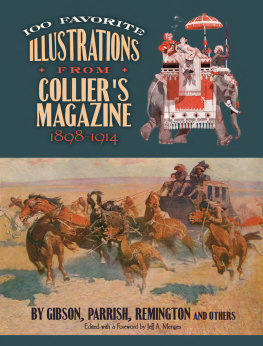
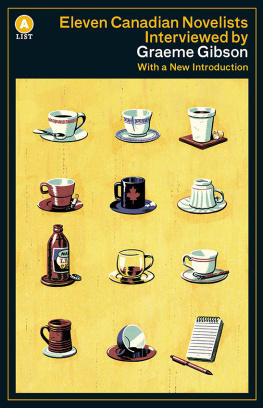



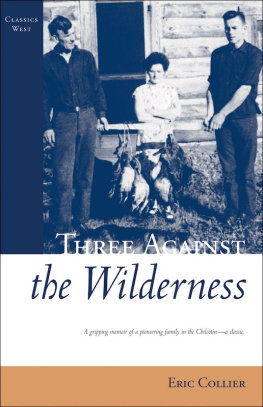


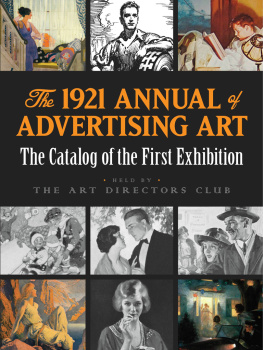
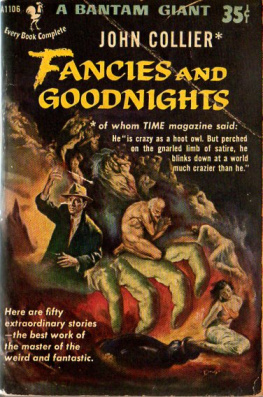

 Copyright Copyright 2019 by Dover Publications, Inc. All rights reserved. Bibliographical Note This Dover edition, first published in 2019, is a new compilation of images originally published by Peter F. Collier & Son Publishers in 1908 and 1914. Jeff A. Menges has selected the 100 illustrations and written the biographical information and the Foreword for this edition.
Copyright Copyright 2019 by Dover Publications, Inc. All rights reserved. Bibliographical Note This Dover edition, first published in 2019, is a new compilation of images originally published by Peter F. Collier & Son Publishers in 1908 and 1914. Jeff A. Menges has selected the 100 illustrations and written the biographical information and the Foreword for this edition. ILLUSTRATORS OF THE 100 PLATESAylward, William James (18751956) Aylward was born in Milwaukee, the son of a Great Lakes ship captain.
ILLUSTRATORS OF THE 100 PLATESAylward, William James (18751956) Aylward was born in Milwaukee, the son of a Great Lakes ship captain.